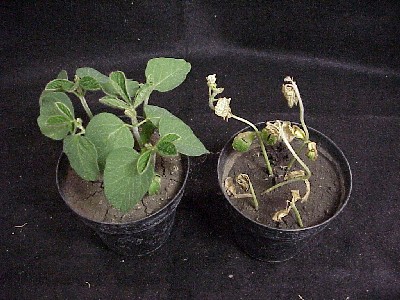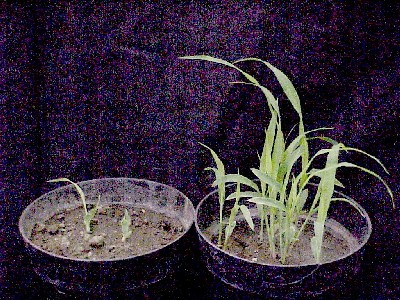Chapter 14: Applied Herbicide Physiology and Movement
14.5 Soil Herbicide Placement Importance

The roots and shoots of plants are the primary absorptive tissue s of soil active herbicides. As we mentioned already, some herbicides are absorbed primarily by roots, while others are absorbed by shoots (Figure 3). In either case, the effective absorptive plant tissue is the young/immature tissue. In the case of the roots, it is the root hairs that are particularly effective in herbicide absorption. As either shoot or root tissue matures, the outer layers become thickened and form a barrier to absorption of herbicides as well as other compounds. Therefore, for absorption to be efficient, the plant tissue must come in contact with the herbicide when it is still in a relatively immature stage. Mature portions of roots and shoots do not absorb herbicides readily.
For root absorbed herbicides to be effective they must be in the root zone of plants. Applied to the soil surface, root absorbed herbicides must be moved into the soil with rainfall or tillage. For practical purposes soil-applied herbicides are rarely found in phytotoxic concentrations in soil deeper than approximately 3 inches. Plants with the bulk of their root systems deeper than 3 inches normally are not greatly affected by these herbicides.

Soil active herbicides that are absorbed primarily by the shoots (grass coleoptile, broadleaf hypocotyl or epicotyl) of germinating seedlings must be in the zone of soil above the seed when the shoots grow through this zone to be effective. If shoot absorbed herbicides are below the shoot depth they will have less effect (Figure 4).
Herbicide Placement for Selectivity
Differential placement of a herbicide with respect to the absorptive tissue of plants is a technique used to achieve selectivity. One example would be using a herbicide in established trees even though the trees could be sensitive to it. However, as long as you are using a root absorbed herbicide that is relatively immobile in the soil, then you will get good control of the shallow root systems of germinating weeds, while the deeper tree roots remain unaffected.
A similar selectivity mechanism allows metribuzin to be used safely on dormant established alfalfa but NOT on dormant newly seeded alfalfa. The root system of established alfalfa is deeper than newly seeded alfalfa and therefore the established plants absorb very little of the herbicide.
Review and Reflection